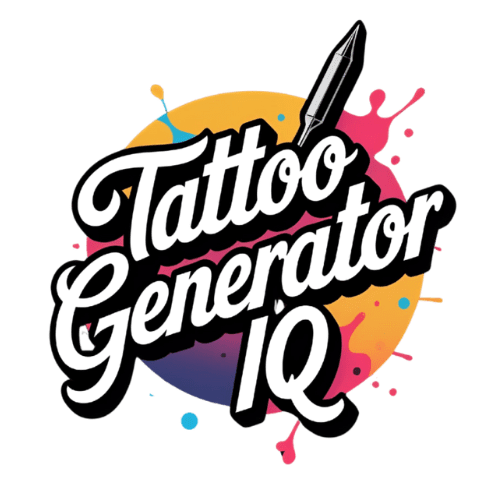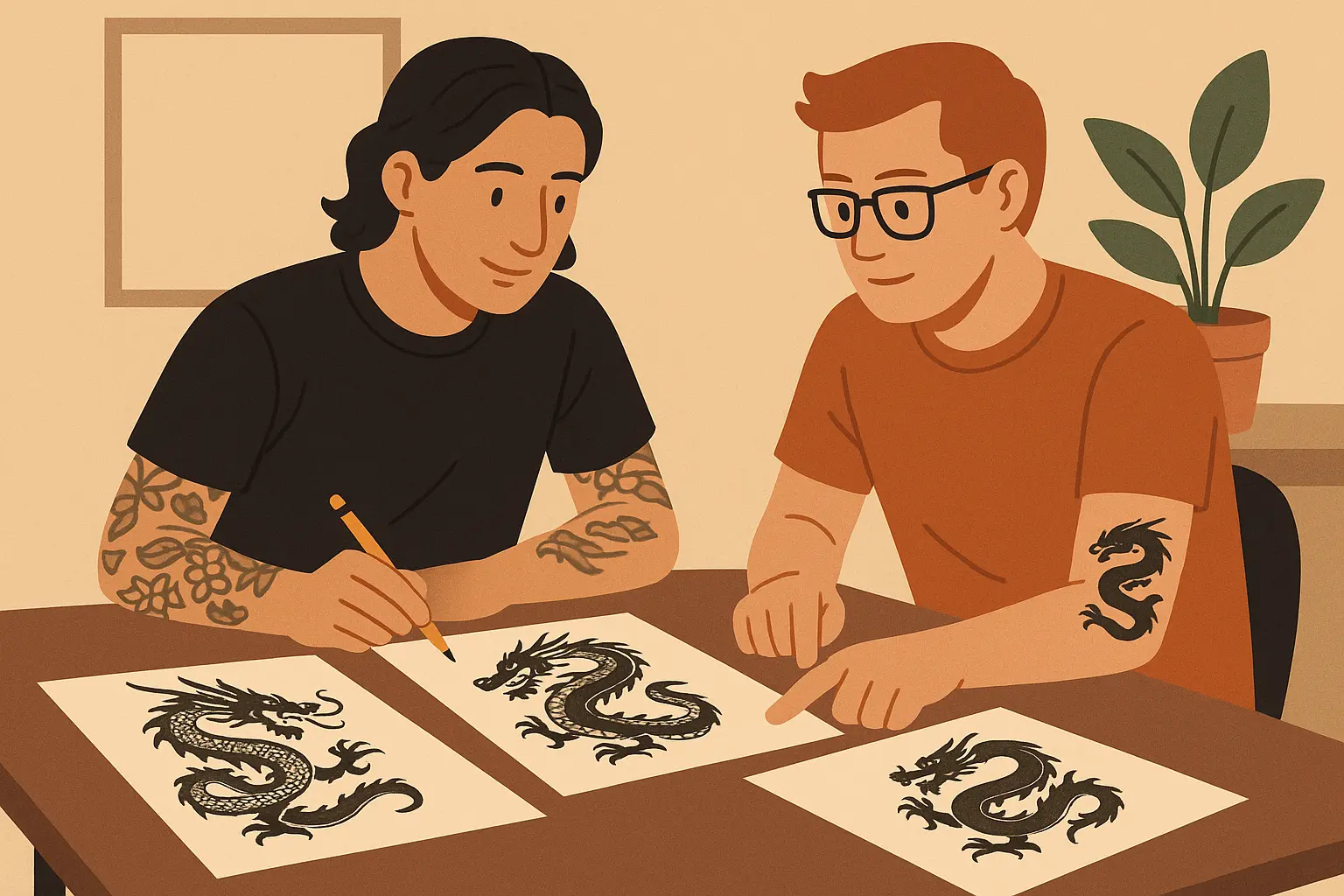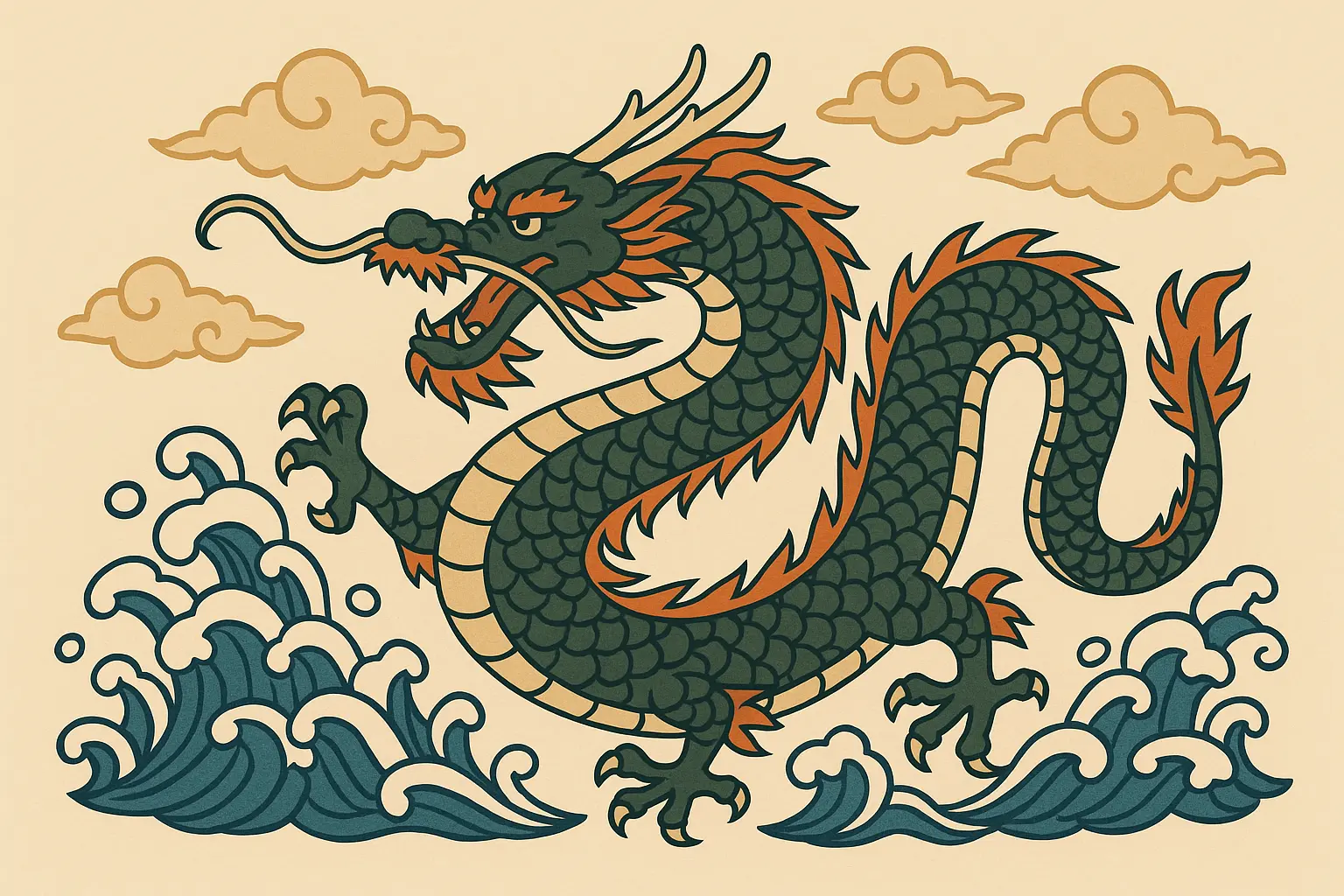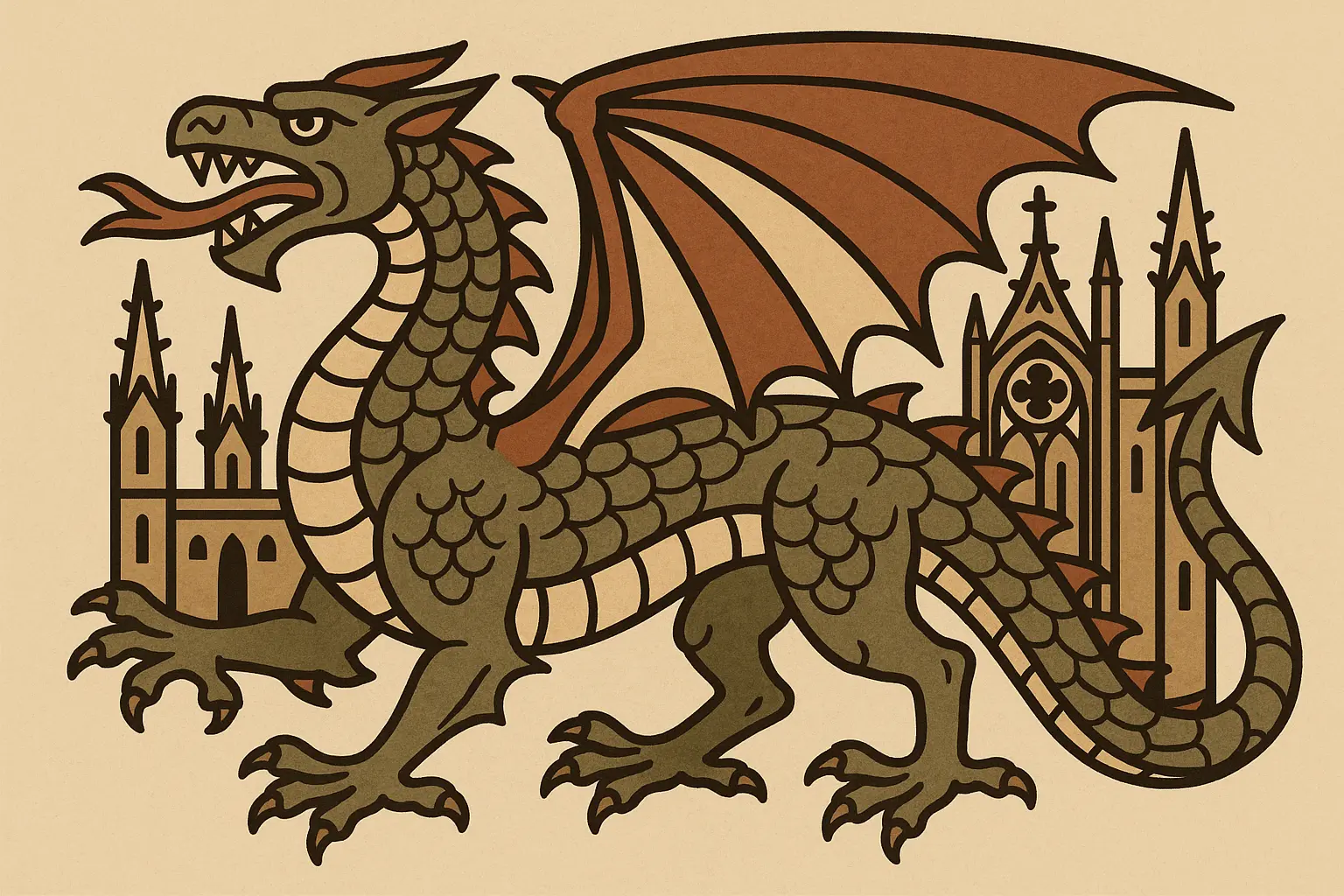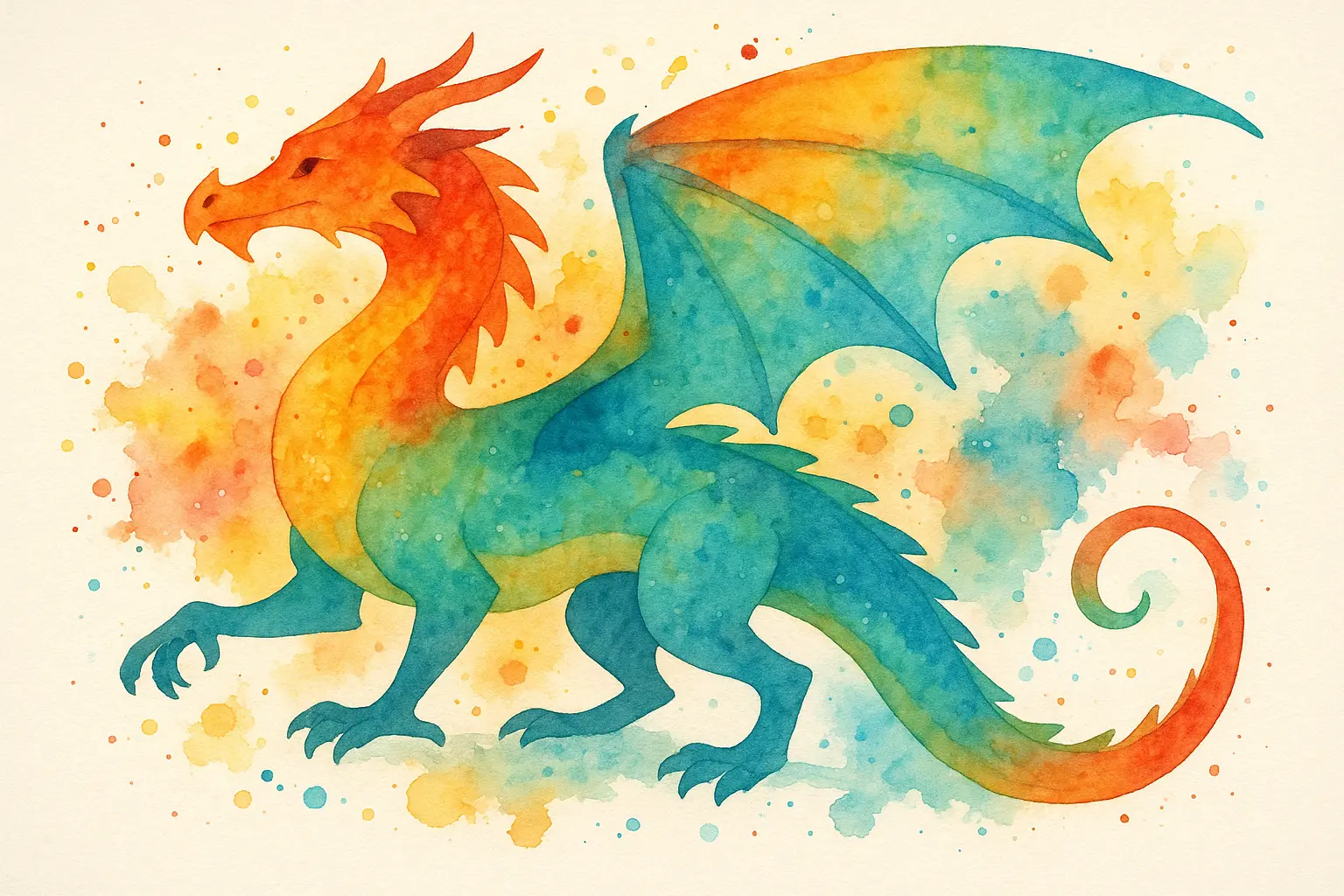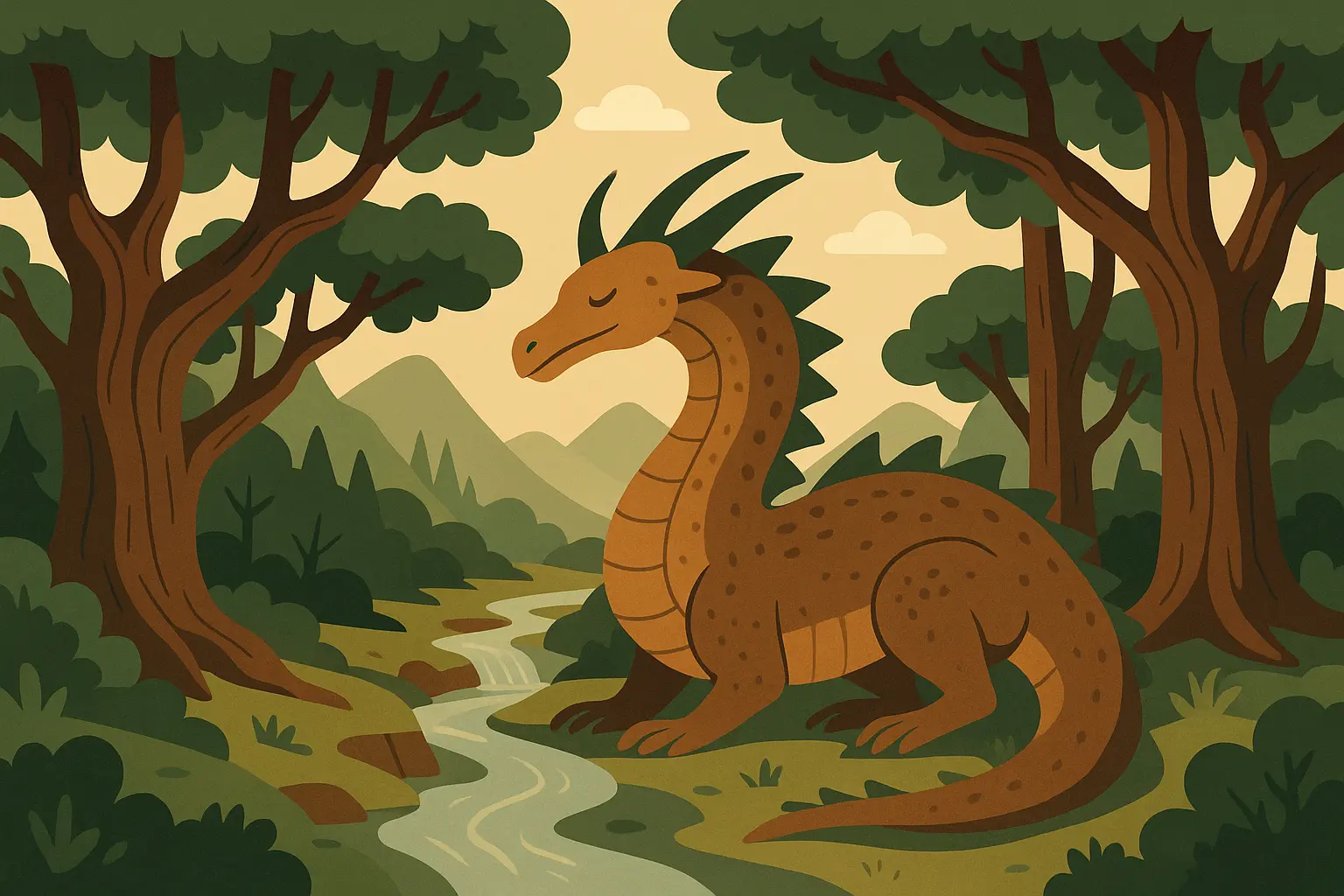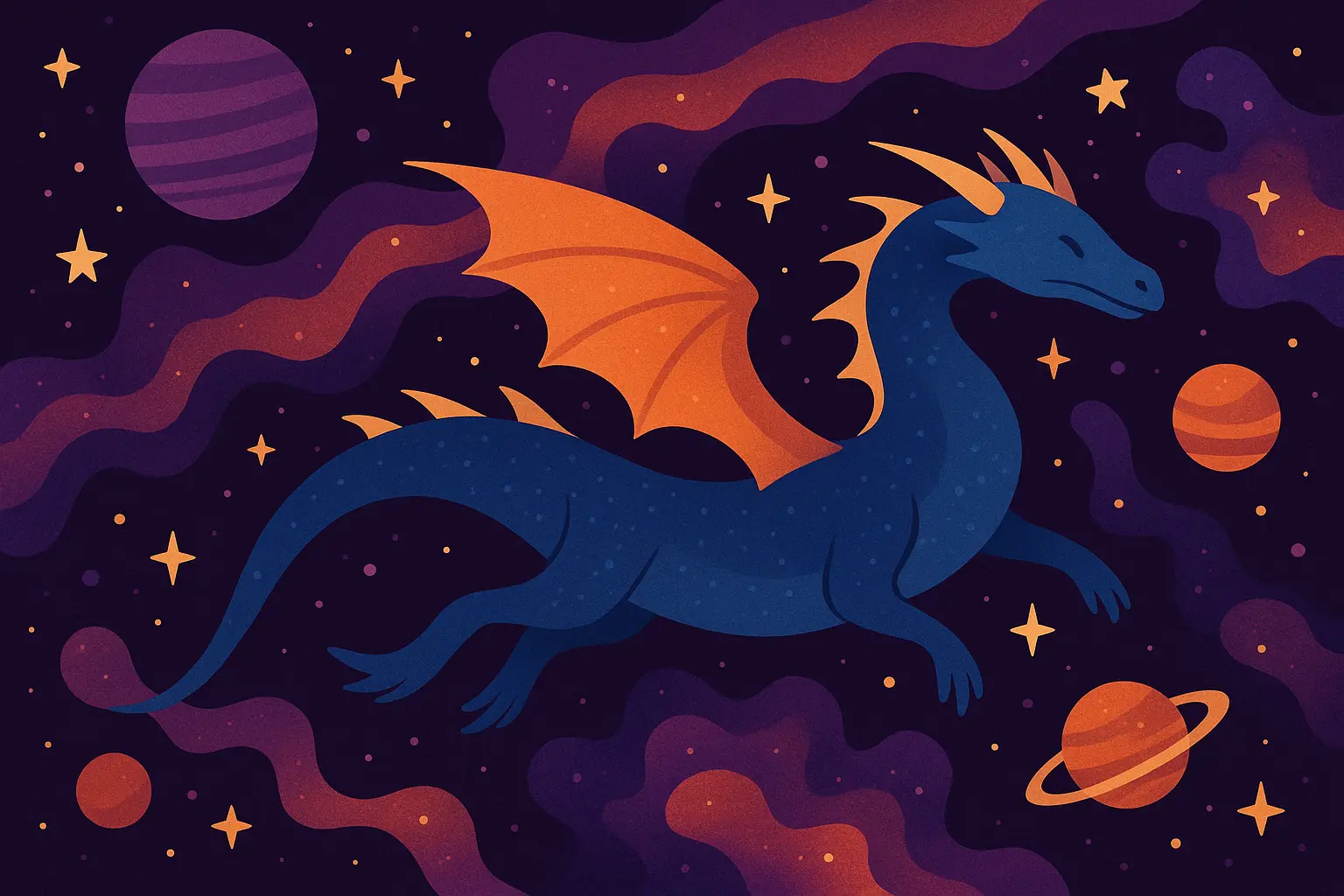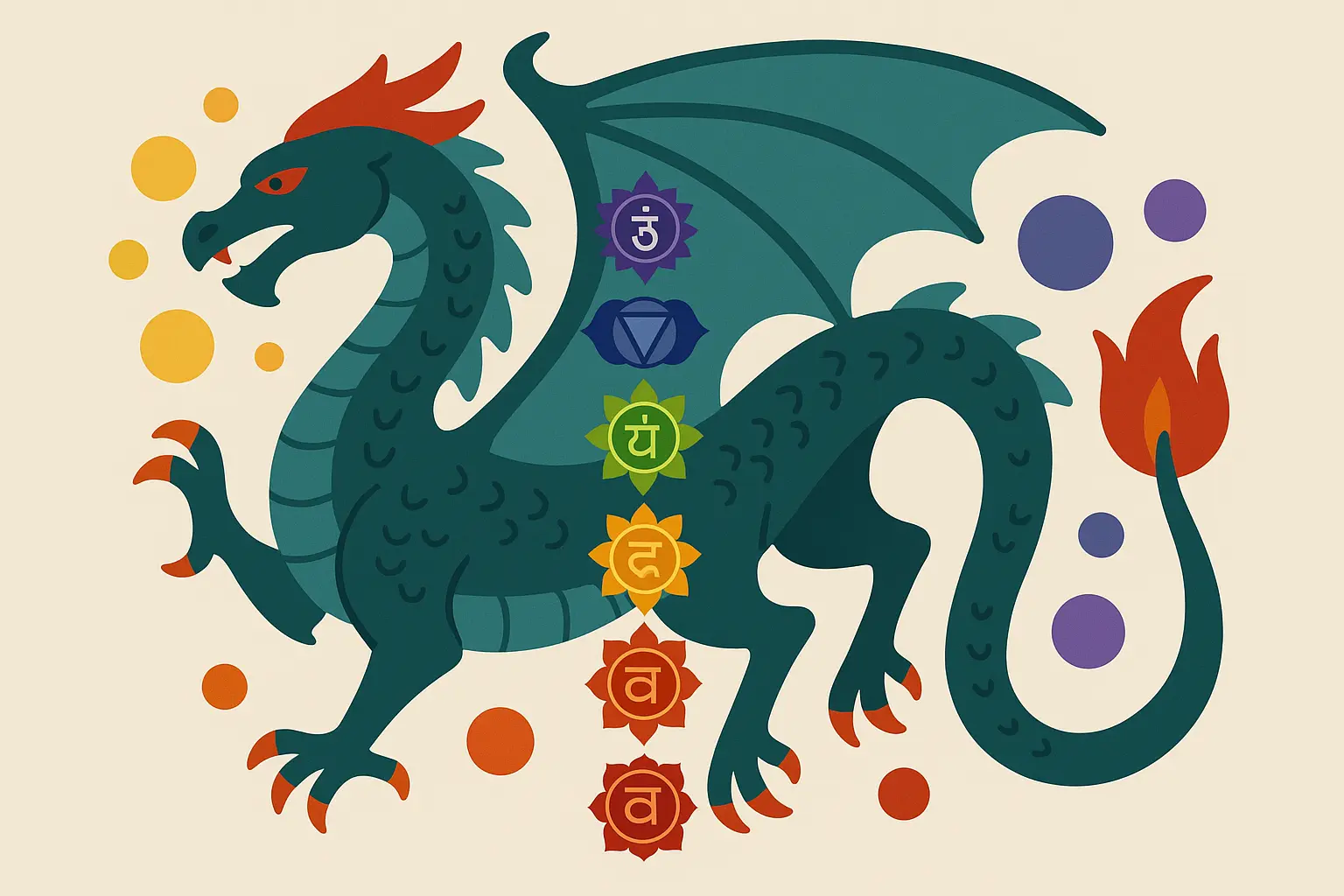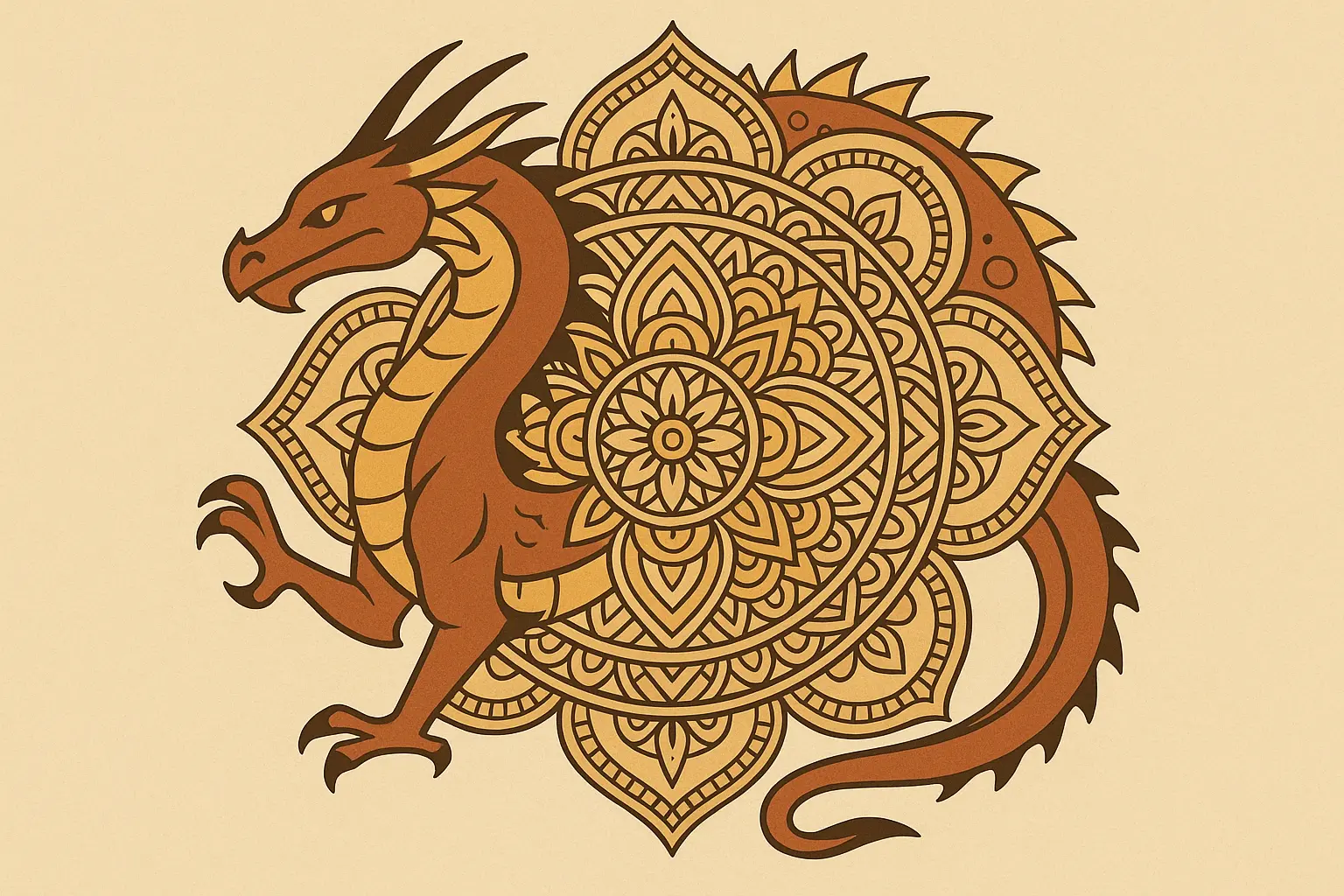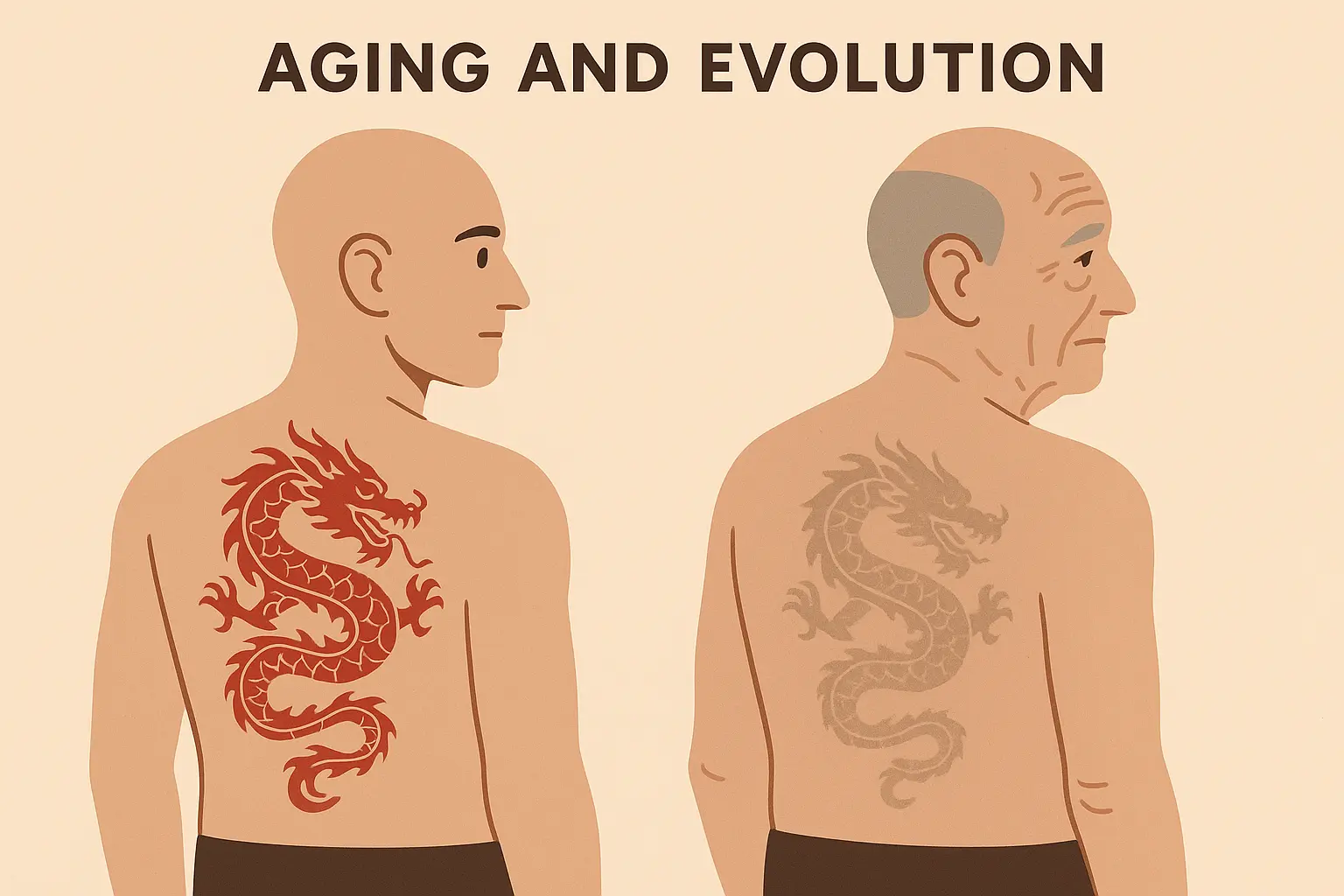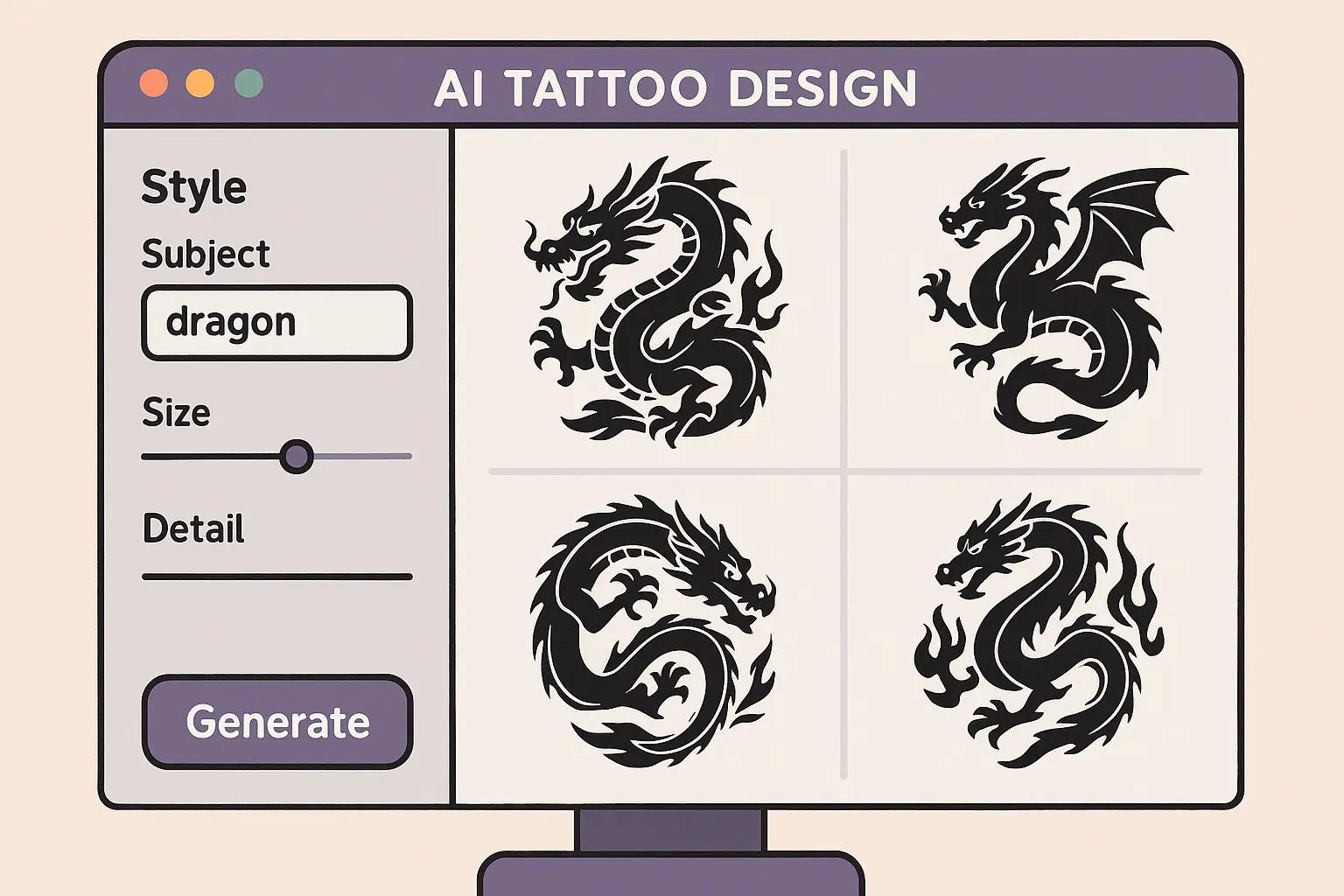25 Stunning Dragon Back Tattoo Designs That Will Transform Your Body Into Art
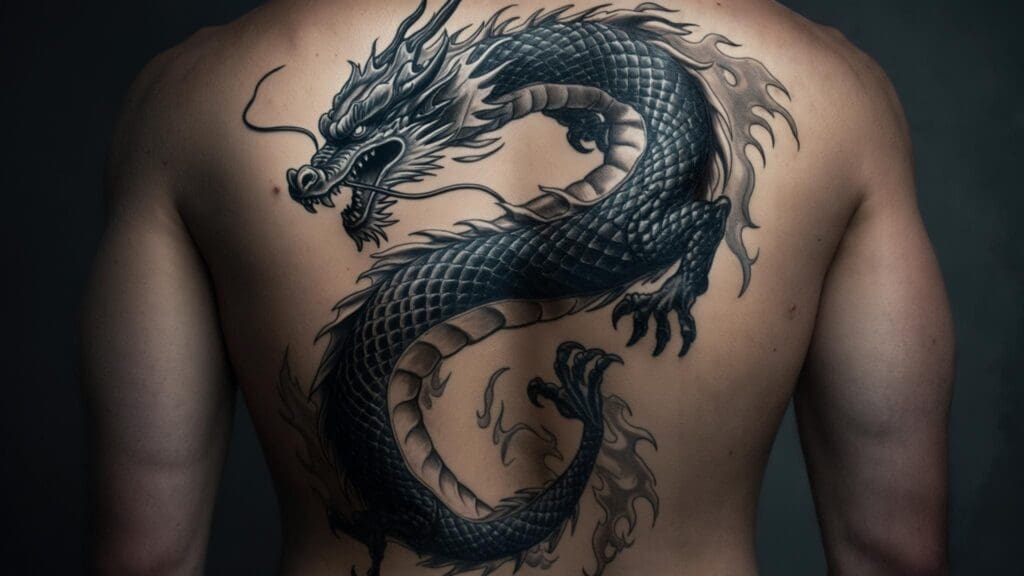
You’ve probably noticed dragon tattoos everywhere lately – and honestly, I get it. There’s something incredible about these mythical creatures that just speaks to people. I remember walking into my first tattoo consultation five years ago, completely overwhelmed by the sheer magnitude of possibilities for dragon designs. The artist spread out dozens of reference images across his desk, each one more intricate than the last, and I realized I was about to embark on one of the most significant artistic decisions of my life.
Dragon designs now represent one of the most requested large-scale tattoo categories, transforming backs into canvases for mythological masterpieces. Your back offers the ultimate canvas for dragon artistry – an expansive space where these legendary creatures can stretch, coil, and breathe with full dramatic impact.
Whether you’re drawn to traditional Asian dragons symbolizing wisdom and power, or prefer modern geometric interpretations that blend ancient mythology with contemporary aesthetics, the right dragon back tattoo becomes a permanent expression of your personal strength and transformation.
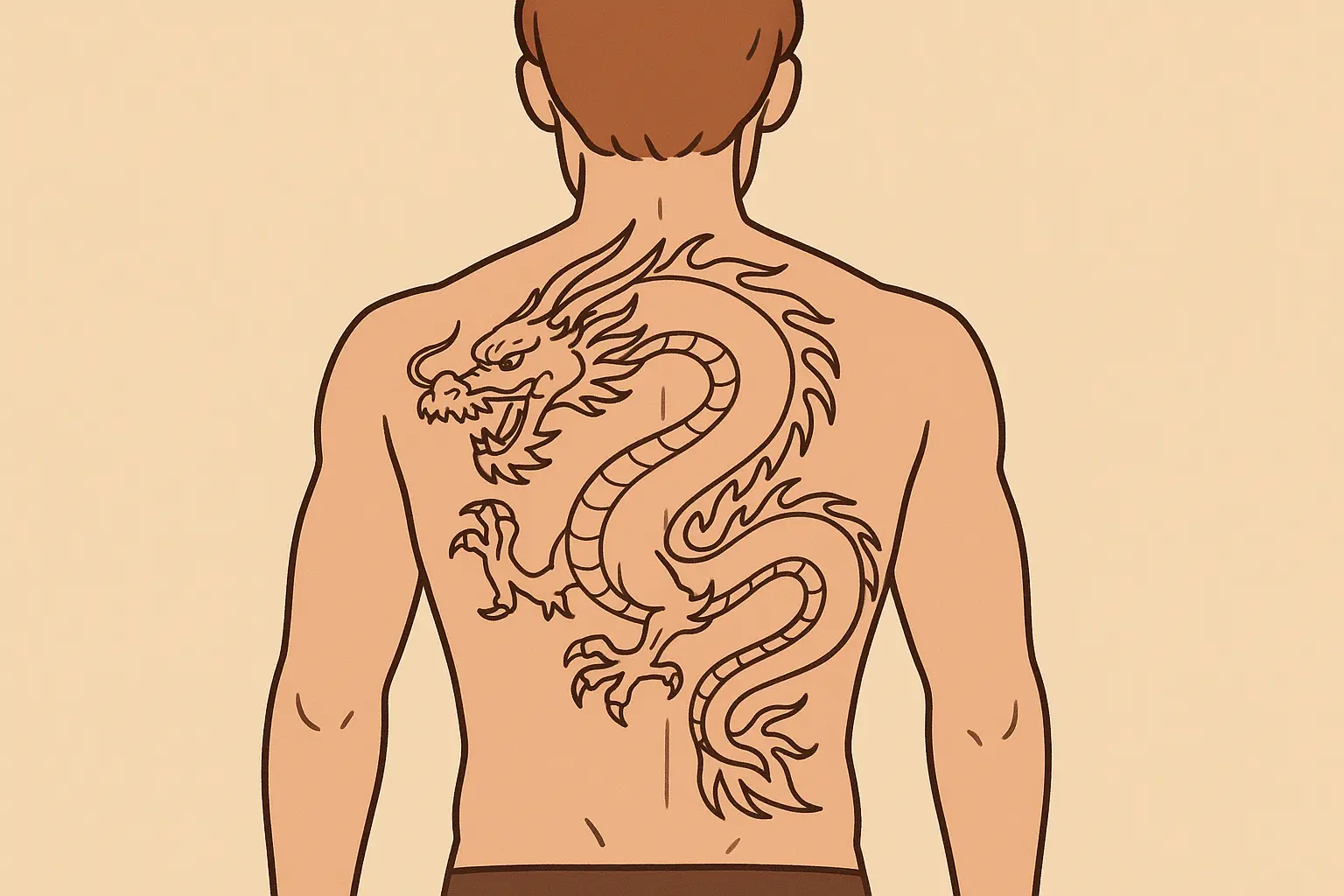
Table of Contents
-
Things You Really Need to Think About Before Getting Your Dragon Back Tattoo
-
Traditional Asian Dragons (Japanese & Chinese Styles)
-
Western Fantasy Dragons
-
Geometric and Modern Interpretations
-
Nature-Integrated Designs
-
Symbolic and Spiritual Themes
-
Making Sure Your Design Fits Your Life
-
How AI Tools Can Help Visualize Your Dragon Vision
-
Final Thoughts
TL;DR
-
Dragon back tattoos can take anywhere from 8-50 hours depending on how crazy detailed you want to go
-
Cultural stuff matters – do your homework on Japanese, Chinese, or Western dragon meanings so you’re not accidentally being disrespectful
-
Back placement is perfect for keeping things professional while giving you maximum space to work with
-
Color designs look amazing but need more touch-ups than black and gray work
-
Finding the right artist is everything – you want someone who specializes in large-scale dragon work, not just someone who’s decent at tattoos
-
Design styles range from traditional Asian masterpieces to modern geometric interpretations and nature scenes
-
Think about your lifestyle, job requirements, and whether you’ll still love this in 20 years
-
Planning ahead and visualizing your design can save you from expensive regrets later
Things You Really Need to Think About Before Getting Your Dragon Back Tattoo
Before you commit to a dragon back tattoo, let’s talk about the stuff that really matters for both your immediate happiness and long-term satisfaction with this major investment. We’re talking about how complex you want to go, cultural significance and authenticity, size and coverage decisions, color versus black and gray choices, and finding the right artist.
Each of these factors directly impacts cost, healing time, maintenance needs, and how well it’ll work with your professional life. Understanding these elements upfront prevents costly mistakes and ensures your dragon back tattoo aligns with your personal values, lifestyle, and what you’ll still think looks awesome decades from now.
Design Complexity and Detail Level
Dragon back tattoos can range from simple line work that takes maybe 10-15 hours to photorealistic masterpieces that’ll have you in the chair for 40+ hours across multiple sessions. Your pain tolerance plays a major role here – sitting for extended periods while needles work across your spine and shoulder blades tests even people who’ve gotten plenty of tattoos before.
Understanding the pain level tattoo chart can help you prepare for the intensity of back dragon tattoo sessions. Here’s the deal with costs: simple designs might run you $1,500-3,000, while intricate traditional pieces can hit $8,000-15,000 or more.
Time commitment extends way beyond just sitting in the chair – complex dragon back tattoo designs need multiple sessions spanning several months, with healing periods between each appointment where you can’t do much of anything fun.
If you’re thinking minimalist, you’re looking at maybe 8-15 hours total, manageable pain levels, and a few thousand dollars. Want something that covers your entire back with crazy detail? Clear your calendar for the next six months and your bank account for $10,000+. Most people fall somewhere in the middle with traditional medium detail work.
Consider your schedule realistically. Can you take time off work for healing? Will you actually follow aftercare instructions for weeks at a time? These practical questions matter as much as artistic vision when planning your dragon back tattoo.
Cultural Significance and Style Authenticity
Dragons carry deep meanings across different cultures, and understanding these contexts prevents you from accidentally being disrespectful while ensuring your design actually means something to you. Asian dragons are basically the cool, wise mentors of the dragon world – Japanese dragons (ryu) represent wisdom, water, and protective power, while Chinese dragons symbolize imperial strength and prosperity.
Western dragons? They’re the badasses from medieval stories, all fire and fury and “don’t mess with me” energy. Celtic dragons incorporate knotwork symbolizing eternity and how everything in life is connected. Norse dragons connect to Viking mythology and runic traditions.
Sarah, a marketing executive, initially wanted a Japanese dragon purely because it looked cool. After researching the cultural significance during her consultation, she realized the water and wisdom symbolism perfectly matched her personal journey overcoming anxiety through meditation. This deeper connection made her final dragon back tattoo way more meaningful than just picking something that looked pretty.
Do your homework before choosing. Does the cultural meaning actually resonate with your personal beliefs? Are you prepared to respectfully represent these ancient symbols? Your tattoo artist should understand these cultural nuances and help guide you toward authentic representation rather than just copying whatever’s trending on Instagram.
Size and Coverage Considerations
Full back dragon tattoos require careful planning for proportions and how they’ll flow with your body’s natural contours. Think about whether you want complete coverage, partial designs, or space for future additions. Your body size, muscle definition, and potential weight changes all affect how the design will look over time.
Spine placement creates unique challenges – the dragon’s body must flow naturally with your vertebrae while maintaining visual balance. Shoulder blade positioning affects how the dragon’s head and claws appear when you move. Hip and lower back areas determine tail placement and overall composition flow.
Think long-term. Will you want to add complementary pieces later? Do you want room for expansion? Planning coverage areas upfront prevents design conflicts and ensures everything works together cohesively.
Color vs. Black and Gray Decisions
Color dragon tattoos create stunning visual impact but require significantly more maintenance than black and gray work. Those gorgeous vibrant scales and flame effects fade faster, especially with sun exposure. Touch-ups become necessary every 5-10 years to keep colors looking fresh, adding ongoing costs to your investment.
Black and gray designs age more gracefully, maintaining their impact for decades with minimal touch-ups. They also work better for professional environments where subtle tattoos are preferred. However, they sacrifice the dramatic visual punch that color provides.
Be honest about your lifestyle. Do you spend tons of time outdoors? Are you actually going to remember sunscreen every single day? Will you budget for periodic color refreshing? These practical factors should influence your color decisions for your dragon tattoo back piece.
Artist Selection and Technical Requirements
Dragon back tattoos demand exceptional technical skill in anatomy, shading, and large-scale composition. Not every talented tattoo artist can execute these complex pieces successfully. You need someone who specializes specifically in dragon work and large back pieces.
Review portfolios carefully, looking for consistency across multiple dragon projects. Pay attention to scale work, shading techniques, and how well designs flow with body contours. Ask to see healed photos – fresh tattoos always look perfect, but healed work reveals true skill levels.
Don’t just scroll through Instagram and pick someone because their dragons look cool. Meet them. Talk to them. Do they get excited about your idea, or do they seem like they’re just going through the motions? You’re going to spend a lot of time with this person.
When budgeting for your dragon back tattoo, research how much tattoos cost to understand the full investment involved in these large-scale pieces.
Traditional Asian Dragons (Japanese & Chinese Styles)
Traditional Asian dragon designs represent the most culturally rich and technically demanding category of dragon back tattoos. These designs draw from centuries of Japanese and Chinese artistic traditions, incorporating specific symbolic elements, color palettes, and compositional rules that have been refined over generations.
Japanese dragons (ryu) emphasize flowing, serpentine forms with water and cloud elements, while Chinese dragons feature more robust bodies with imperial symbolism. Each design requires cultural knowledge and master-level artistic skills, with completion times ranging from 20-50 hours. These traditional styles age beautifully when executed properly and offer profound personal meaning for those who connect with Asian dragon mythology and symbolism.
1. Full Back Japanese Dragon (Ryu)
This is the holy grail of traditional Japanese tattooing. The serpentine dragon winds across your entire back, its body flowing from shoulder to hip in graceful curves that follow your natural anatomy like it was meant to be there. Traditional elements include water patterns, cherry blossoms, and cloud formations that create a complete scene rather than just slapping a dragon on your back.
The dragon’s head typically sits prominently on one shoulder blade, with fierce yet wise eyes gazing forward. Its body coils and twists, creating movement that literally brings the creature to life. Traditional Japanese color palettes feature deep blues, rich reds, and lustrous golds with bold black outlining that defines every scale and whisker.
This represents the pinnacle of traditional Japanese tattooing, requiring 30-50 hours with a master-level artist. The investment is substantial – expect $6,000-12,000+ for quality work. However, these full back dragon tattoo designs age beautifully and maintain their impact for decades. Plus, nobody at your office job will ever know unless you want them to.
2. Chinese Imperial Dragon
Chinese imperial dragons project serious power and majesty through their more robust body structure and distinctive five-clawed design. These dragons feature broader heads, more muscular bodies, and elaborate cloud patterns that swirl around the creature in traditional Chinese artistic style. Flame motifs often accompany the dragon, emphasizing its connection to imperial power and divine authority.
The design emphasizes bold, flowing lines and rich color combinations of red, gold, and black that create striking visual impact. Pearl or flaming orb elements frequently appear, representing wisdom and the pursuit of enlightenment. The overall composition projects strength and nobility befitting imperial symbolism.
This is moderate to high complexity requiring 25-40 hours of work. Strong cultural significance makes this choice meaningful for those with Chinese heritage or deep appreciation for Chinese culture. The bold line work ages exceptionally well, and the design translates beautifully to both color and black/gray applications.
3. Minimalist Japanese Dragon Outline
Perfect for those who appreciate traditional Japanese aesthetics but prefer cleaner, more understated designs. This approach focuses on essential dragon elements – the flowing body line, distinctive head shape, and key details like claws and whiskers – without heavy shading or complex color work. The result captures traditional dragon essence while remaining more accessible and affordable.
Clean line work emphasizes the dragon’s graceful movement and proportions. Strategic use of negative space creates visual breathing room while maintaining the design’s impact. This style works exceptionally well for first-time large tattoo recipients who want traditional aesthetics without overwhelming complexity.
Lower pain tolerance requirements make this ideal for newcomers to large tattoos. 8-15 hour completion time keeps costs reasonable while delivering impressive results. The design ages exceptionally well due to bold, simple lines, and it’s easily expandable if you decide to add elements later.
4. Koi-to-Dragon Transformation
This design tells the legendary story of a koi fish climbing a waterfall and transforming into a dragon – a powerful symbol of perseverance, determination, and achieving the impossible. The composition typically flows vertically along your spine, with the koi at the bottom gradually transforming into a dragon at the top, surrounded by flowing water elements throughout.
Marcus, a former military veteran, chose the koi-to-dragon transformation to represent his journey from struggling with PTSD to becoming a successful therapist helping other veterans. The design’s progression from humble koi to mighty dragon perfectly captured his personal growth story, making every session meaningful as the transformation literally took shape on his back.
The transformation process creates natural visual interest as scales replace fins, whiskers emerge, and the humble koi becomes a mighty dragon. Water elements tie the entire piece together, creating movement and flow that enhances the transformation narrative. This design resonates strongly with people who’ve overcome significant challenges or achieved major life goals.
This carries powerful symbolic meaning and requires 20-30 hours of work. The design works beautifully in both color and black/gray applications, and the vertical flow suits back anatomy perfectly. Appeals strongly to those with personal growth narratives or stories about overcoming adversity.
5. Dragon and Phoenix Pairing
Traditional yin-yang representation featuring a dragon and phoenix intertwined across your back, symbolizing perfect balance between masculine and feminine energies. This complex composition requires careful planning to balance both creatures effectively while maintaining visual harmony. The dragon typically represents masculine power while the phoenix embodies feminine grace and rebirth.
The intertwining design creates dynamic movement as both creatures spiral around each other in eternal dance. Traditional elements like clouds, flames, and flowing ribbons connect the two figures while maintaining their individual characteristics. Color choices often emphasize the contrast – cool blues and greens for the dragon, warm reds and golds for the phoenix.
High complexity due to dual subjects requires 35-50 hours with an expert-level artist. The investment is substantial but creates stunning visual impact with profound cultural and personal significance. This japanese dragon back tattoo design demands an artist skilled in both dragon and phoenix imagery, making artist selection particularly crucial.
Understanding traditional Japanese tattoo designs can provide valuable context for authentic dragon back tattoos elements and cultural symbolism.
Western Fantasy Dragons
Western fantasy dragons offer a completely different vibe compared to Asian traditions. These designs draw inspiration from European medieval art, Celtic traditions, Norse mythology, and modern fantasy culture. Western dragons typically feature bat-like wings, four legs, and more aggressive postures, often depicted breathing fire or in combat poses.
The designs range from traditional medieval representations with gothic elements to contemporary fantasy interpretations inspired by gaming and popular culture. Completion times vary from 20-45 hours depending on complexity, and these designs particularly appeal to fantasy enthusiasts, gamers, and those with European heritage connections.
6. European Medieval Dragon
The classic Western dragon brings medieval fantasy to life on your back. These creatures feature the traditional four-legged body structure with powerful bat-like wings, often depicted breathing fire or in fierce combat poses. Medieval elements like castles, knights, heraldic shields, or gothic architecture frequently accompany the dragon, creating a complete fantasy scene.
The dragon’s anatomy emphasizes power and ferocity – muscular limbs, sharp claws, and fierce expressions that embody the Western concept of dragons as formidable adversaries. Color schemes often incorporate deep reds, blacks, and metallic golds that enhance the medieval atmosphere. The overall composition projects strength, courage, and fantasy adventure.
This is moderate complexity requiring 20-35 hours of work. Excellent choice for fantasy genre enthusiasts, medieval history lovers, and those who prefer Western dragon symbolism. The design works well with gothic or medieval aesthetic elements and creates strong visual impact. Appeals particularly to gaming communities and fantasy literature fans.
7. Celtic Dragon Knotwork
Celtic dragon designs are like visual puzzles that never end. The knots and spirals loop around forever, which is exactly the point – they represent eternity and how everything in life is connected. Plus, they look incredibly badass in simple black ink. The dragon’s body becomes part of the knotwork itself, creating unique visual complexity.
Traditional Celtic artistic elements include trinity knots, spiral patterns, and interlacing designs that require precise execution to maintain proper proportions and flow. The endless knots create mesmerizing visual effects while honoring ancient Celtic artistic traditions. These back tattoos dragon designs work exceptionally well in black ink, emphasizing the bold line work and geometric precision.
High detail requirements demand 25-40 hours with an artist skilled in Celtic patterns. Appeals strongly to those with Celtic heritage or appreciation for Celtic culture. The bold line work ages exceptionally well, and the geometric nature creates timeless appeal. Requires an artist familiar with traditional Celtic knotwork principles and proportions.
8. Norse/Viking Dragon
Norse dragon designs draw inspiration from Viking mythology and Nordic artistic traditions, featuring runic symbols, Viking ship elements, and the distinctive artistic style found in ancient Norse artifacts. These dragons often incorporate Jormungandr (the World Serpent) imagery or other creatures from Norse mythology like Fafnir or Níðhöggr.
Runic inscriptions add authentic cultural elements while Viking artistic motifs create unique aesthetic appeal. The dragons typically feature more angular, geometric styling compared to flowing Asian designs, reflecting the bold, warrior culture of the Norse people. Earth tones and metallic colors enhance the ancient Nordic atmosphere.
Moderate to high complexity requiring 20-35 hours of work. Strong cultural appeal for those with Norse heritage or Viking culture appreciation. Works excellently in black/gray applications that emphasize the bold, graphic nature. Creates distinctive appearance that stands apart from both Asian and other Western dragon styles.
9. Modern Fantasy Dragon
Contemporary interpretations featuring realistic anatomy, detailed scales, and dramatic poses inspired by modern fantasy art, video games, and popular culture. These dragons often incorporate magical elements like crystals, energy effects, or spell-casting poses that reflect current fantasy aesthetics rather than traditional mythology.
The artistic style emphasizes photorealistic rendering with complex shading, detailed textures, and dynamic lighting effects. Modern color palettes might include unconventional choices like purples, electric blues, or metallic sheens that create contemporary visual appeal. The overall effect projects power and magic in distinctly modern terms.
High complexity requiring 30-45 hours with an artist skilled in realistic rendering techniques. Appeals strongly to gaming communities, fantasy art enthusiasts, and those who prefer contemporary aesthetics. May require periodic touch-ups to maintain fine detail work. Creates conversation-starting pieces that reflect current pop culture interests.
10. Tribal Dragon Fusion
Combines dragon imagery with tribal tattoo elements, creating bold black designs with flowing curves and geometric patterns. This fusion style emphasizes strong silhouettes, negative space usage, and the graphic impact that made tribal tattoos popular in the 1990s and 2000s, updated with dragon mythology and symbolism.
The design focuses on bold, flowing lines that create dragon shapes through strategic use of black ink and negative space. Geometric patterns within the dragon’s body add visual interest while maintaining the clean, graphic aesthetic. The result projects strength and power through simplified, iconic imagery.
Moderate complexity requiring 15-25 hours of work. Ages exceptionally well due to bold, simple design elements. Works effectively for various body types and creates strong visual impact. Appeals to those who prefer bold, graphic designs over detailed realistic work. Offers excellent value for the visual impact achieved.
For those interested in exploring Norse-inspired designs further, check out our guide to Viking tattoo ideas that complement dragon on back tattoo beautifully.
Geometric and Modern Interpretations
Geometric and modern dragon interpretations represent the cutting edge of contemporary tattoo artistry, blending ancient dragon mythology with current artistic trends and techniques. These designs incorporate mathematical patterns, sacred geometry, watercolor effects, biomechanical elements, minimalist aesthetics, and innovative techniques like dotwork.
They appeal to clients seeking unique, contemporary approaches to dragon imagery while maintaining the symbolic power of these mythological creatures. Completion times range from 8-50 hours depending on technique complexity, with some approaches like dotwork requiring exceptional time investments. These modern interpretations often age differently than traditional work and may require specialized artist skills in contemporary tattooing techniques.
11. Sacred Geometry Dragon
Sacred geometry dragons incorporate mathematical patterns like the Flower of Life, Metatron’s Cube, or Fibonacci spirals into the dragon’s form, creating designs that blend ancient mythology with spiritual and metaphysical symbolism. These patterns represent universal creation principles and cosmic order, appealing to those interested in sacred geometry, meditation, and spiritual growth.
The dragon’s body might flow through geometric grids, emerge from mandala patterns, or incorporate golden ratio proportions that create naturally pleasing visual harmony. Precise line work and perfect symmetry become crucial elements, requiring artists skilled in both organic dragon anatomy and mathematical precision.
High precision requirements demand 25-35 hours with an artist skilled in geometric work. Appeals to spiritual/metaphysical communities and those seeking unique, contemporary approaches. The mathematical foundation creates timeless appeal that transcends trend cycles. Requires exceptional planning and measurement skills from the artist.
12. Watercolor Dragon
Watercolor dragons look like someone splashed paint across your back and a dragon emerged from the chaos. They’re absolutely stunning and very Instagram-worthy, but heads up – those gorgeous color splashes might need touch-ups down the road. This contemporary style creates artistic, painterly effects that mimic actual watercolor paintings, offering a fresh take on traditional dragon imagery.
The technique requires specialized skills in color blending, gradient creation, and strategic color placement that mimics paint flow and bleeding effects. Dragons might appear to be painted in real-time, with color drips, splashes, and organic color mixing that creates dynamic, artistic appeal.
Moderate to high complexity requiring 20-30 hours with an artist specializing in watercolor techniques. Creates highly Instagram-worthy results that photograph beautifully. However, watercolor effects may fade faster than traditional work, requiring more frequent touch-ups. Appeals strongly to art enthusiasts and social media-conscious clients.
13. Biomechanical Dragon
I met this guy at a tattoo convention who had a biomechanical dragon that looked like it was literally crawling out of his spine. Turns out he was a software engineer who’d always felt like he was part human, part machine anyway. Sometimes the perfect design just finds you. These fusion designs combine organic dragon anatomy with mechanical elements like gears, pistons, hydraulics, and metallic plating, appealing to science fiction enthusiasts who want futuristic dragon interpretations.
The design challenges involve seamlessly integrating organic curves with mechanical angles, creating believable fusion points where flesh meets metal. Detailed rendering of both biological textures and mechanical components requires exceptional artistic skill in multiple rendering techniques.
High complexity demanding 30-45 hours with artists skilled in both organic and mechanical rendering. Appeals strongly to sci-fi fans, gamers, and technology enthusiasts. Creates distinctive, conversation-starting pieces that stand apart from traditional dragon work. Requires artists comfortable with complex technical illustration.
14. Minimalist Line Art Dragon
Single-line or minimal line work creating dragon silhouettes with only essential details. This modern aesthetic emphasizes clean, flowing lines and strategic negative space usage for understated elegance that appeals to minimalist design preferences.
The challenge lies in capturing dragon essence with minimal elements – every line must serve multiple purposes, defining form, suggesting movement, and creating visual interest simultaneously. The result projects sophistication through restraint rather than complexity.
Lower complexity requiring 8-15 hours makes this accessible for various budgets. Excellent aging characteristics due to bold, simple lines. Professional-friendly appearance works well in conservative environments. Easily expandable if you decide to add elements later. Appeals to modern aesthetic preferences and minimalist lifestyle choices.
15. Dotwork Dragon
Created entirely through stippling and dot patterns, this technique produces unique visual textures through thousands of individual dots rather than solid lines or shading. The method creates distinctive appearance that ages uniquely well while offering alternative aesthetic appeal.
Each dot must be precisely placed to create form, shadow, and texture through density variations. The technique demands exceptional patience and precision from both artist and client, as sessions involve repetitive dot application over extended periods.
Extremely high time investment requiring 35-50 hours due to dot-by-dot application. Requires artists specializing in dotwork techniques. Ages uniquely well as dots maintain their integrity over time. Appeals to alternative tattoo enthusiasts seeking distinctive, non-traditional approaches.
Nature-Integrated Designs
Nature-integrated dragon designs create complete environmental scenes where dragons interact with natural landscapes, weather patterns, and seasonal elements. These designs transform your back into a living ecosystem where the dragon becomes part of a larger natural story.
Categories include forest settings with trees and mountains, ocean scenes with traditional wave patterns, mountain landscapes where dragons become geological features, seasonal transformations showing natural cycles, and celestial themes incorporating space and astronomical elements. These designs require 20-50 hours depending on environmental complexity and appeal to outdoor enthusiasts, nature lovers, and those seeking storytelling elements in their tattoos.
16. Dragon in Forest Setting
The dragon winds through detailed forest landscapes complete with trees, mountains, streams, and wildlife, creating complete natural scenes rather than focusing solely on the creature itself. This approach transforms your back into a living ecosystem where the dragon serves as the central character in a larger environmental story.
Forest elements might include ancient trees with gnarled roots, mountain peaks shrouded in mist, flowing streams, and seasonal foliage that creates depth and atmosphere. The dragon interacts naturally with these elements – perhaps drinking from a stream, coiling around tree trunks, or emerging from mountain caves.
High complexity due to multiple landscape elements requires 35-50 hours of detailed work. Appeals strongly to nature lovers, hikers, and outdoor enthusiasts. Works beautifully in both color and black/gray applications. Creates storytelling elements that invite closer examination and conversation.
17. Ocean Dragon with Waves
Features dragons emerging from or swimming through stylized ocean waves, often incorporating traditional Japanese wave patterns that add movement and flow to the overall composition. Water elements create natural movement that enhances the dragon’s serpentine form while adding cultural authenticity.
Traditional wave techniques found in Japanese woodblock prints create distinctive visual appeal while honoring artistic traditions. Foam, spray, and water movement add dynamic energy that brings the entire piece to life. The dragon might be surfacing from depths, riding wave crests, or diving through water.
Moderate to high complexity requiring 25-40 hours of work. Excellent opportunity to showcase traditional Japanese water techniques and wave patterns. Strong visual flow creates natural movement across your back. Appeals to ocean lovers, surfers, and those drawn to water symbolism.
18. Mountain Range Dragon
The dragon’s body forms mountain ridges and peaks, creating landscapes where the creature becomes one with the natural environment. This unique interpretation appeals to mountain lovers and creates distinctive visual effects where mythology meets geography.
The dragon’s spine might form mountain ridges, with scales becoming rocky textures and the creature’s curves creating natural valley formations. This approach requires careful planning to maintain both dragon anatomy and believable landscape proportions.
Jake, an avid rock climber, worked with his artist to create a mountain range dragon where each peak represented a significant climb from his adventures. The Rockies formed the dragon’s back, the Himalayas created the head region, and local climbing spots shaped the tail. The design became a personal map of his mountaineering journey while maintaining the mythical dragon aesthetic.
Moderate complexity requiring 20-30 hours of work. Unique interpretation of dragon imagery that stands apart from traditional approaches. Works exceptionally well in black/gray applications that emphasize texture and form. Appeals strongly to hiking, climbing, and outdoor communities.
19. Seasonal Dragon Transformation
Shows the dragon changing through different seasons, with various parts of its body representing spring flowers, summer growth, autumn leaves, and winter elements. This design symbolizes life cycles, change, and the passage of time while creating year-round visual interest.
Each seasonal section requires different artistic techniques – delicate flower work for spring, lush foliage for summer, detailed leaf patterns for autumn, and stark winter elements. The transitions between seasons create natural flow while telling a complete story of natural cycles.
High complexity due to multiple seasonal elements requires 30-45 hours of detailed botanical and seasonal illustration work. Excellent opportunities for color applications that showcase seasonal changes. Symbolic of life cycles and personal growth. Requires artists skilled in botanical illustration and natural elements.
20. Celestial Dragon Among Stars
Features dragons swimming through space among stars, planets, nebulae, and cosmic elements. This approach appeals to astronomy enthusiasts and creates otherworldly atmosphere that transcends earthbound dragon imagery.
Cosmic elements might include detailed star fields, planetary surfaces, nebula clouds, and astronomical phenomena that create depth and wonder. The dragon moves through space as naturally as through water or air, suggesting cosmic power and universal connection.
Moderate to high complexity requiring 25-35 hours depending on astronomical detail levels. Works well with both realistic and stylized approaches to space elements. Appeals to science enthusiasts, astronomy lovers, and those drawn to cosmic themes. Creates unique conversation pieces that blend mythology with science.
Symbolic and Spiritual Themes
Symbolic and spiritual dragon designs focus on deeper meanings, philosophical concepts, and spiritual practices rather than purely looking cool. These designs incorporate ancient symbols like yin-yang, chakra systems, protective imagery, ouroboros cycles, and mandala patterns that represent spiritual concepts and personal beliefs.
They appeal to individuals seeking tattoos with profound personal meaning, spiritual significance, or philosophical representation. Completion times range from 15-40 hours depending on symbolic complexity, and these designs often require artists who understand both dragon imagery and spiritual symbolism to create authentic, meaningful representations.
21. Yin-Yang Dragon Circle
Two dragons form a circular yin-yang symbol, representing perfect balance and duality in life. One dragon typically embodies light, positive energy, and active forces, while the other represents darkness, receptive energy, and passive forces. Together, they create visual harmony that symbolizes life’s essential balance.
The circular composition requires careful planning to ensure both dragons maintain proper proportions while creating the classic yin-yang flow. Color choices often emphasize the contrast – light dragons in whites, golds, or bright colors, dark dragons in blacks, deep blues, or earth tones.
Moderate complexity requiring 20-30 hours of work. Strong philosophical meaning appeals to those interested in Eastern philosophy, balance, and duality concepts. Works well in various sizes and can be adapted for different back coverage areas. Timeless symbolism ensures lasting personal relevance.
22. Dragon with Chakra Elements
Incorporates the seven chakras into the dragon’s body, with each energy center represented by its traditional symbol, color, and placement along the dragon’s spine. This design appeals to those interested in energy work, meditation, and spiritual healing practices.
Each chakra requires accurate representation of its traditional symbol and color – root chakra in red, sacral in orange, solar plexus in yellow, heart in green, throat in blue, third eye in indigo, and crown in violet. The dragon’s body provides natural flow connecting all energy centers.
Moderate complexity requiring 20-30 hours with understanding of chakra symbolism and accurate color representation. Works best in color applications to properly represent each chakra. Appeals to spiritual communities, yoga practitioners, and energy healing enthusiasts. Requires artists familiar with chakra systems and spiritual symbolism.
23. Guardian Dragon Protection Symbol
Features dragons in protective poses, often surrounding or shielding other meaningful symbols like family names, important dates, spiritual icons, or personal totems. The design emphasizes the dragon’s role as protector and guardian rather than fierce creature.
Protective poses might include dragons coiled around sacred symbols, wings spread in sheltering positions, or multiple dragons creating protective circles. Personal elements can be incorporated seamlessly into the protective design, creating highly customized, meaningful pieces.
Moderate complexity requiring 15-25 hours depending on personal elements included. Highly personalizable design allows for unique customization. Strong protective symbolism appeals to those seeking guardian imagery. Works well for commemorating important people, dates, or life events.
24. Ouroboros Dragon
The ancient symbol of a dragon eating its own tail, representing eternal cycles of life, death, and rebirth. This circular design works well for both full and partial back coverage while carrying profound symbolic meaning about life’s cyclical nature.
The design requires careful attention to the connection point where the dragon’s mouth meets its tail, ensuring natural flow and believable anatomy. The circular composition creates natural balance while the symbolism adds depth and meaning.
Moderate complexity requiring 15-25 hours of work. Strong symbolic meaning appeals to those interested in ancient symbolism, life cycles, and philosophical concepts. Works well in various artistic styles from traditional to modern. Circular composition adapts well to different back coverage preferences.
25. Dragon Mandala Fusion
Combines dragon imagery with mandala patterns, creating spiritual and meditative designs that represent wholeness, cosmic order, and the integration of opposing forces. The symmetrical mandala patterns complement the dragon’s flowing form while adding geometric precision.
The design challenges involve integrating organic dragon curves with geometric mandala precision. The dragon might emerge from mandala centers, flow around mandala borders, or incorporate mandala patterns into its scales and body. The result creates meditative, spiritually significant artwork.
High complexity due to mandala precision requirements demands 30-40 hours with artists skilled in both dragon work and geometric patterns. Appeals to meditation practitioners and spiritual communities. Requires exceptional planning and measurement skills. Creates unique fusion of organic and geometric elements.
Making Sure Your Design Fits Your Life
Your dragon back tattoo needs to work with your daily reality, career requirements, personal style preferences, and long-term vision. This section covers professional environment compatibility, lifestyle and maintenance commitments, and personal growth considerations.
Professional environments vary significantly in tattoo acceptance, but back placement offers excellent concealment options. Lifestyle factors include aftercare commitment, exercise restrictions, sun exposure management, and social considerations. Personal growth aspects involve ensuring your chosen design and cultural elements remain meaningful as you evolve, considering the permanent nature of this significant body art investment.
Professional Environment Compatibility
Think about your current and future career paths when selecting dragon back tattoo designs. Corporate environments typically require complete concealment, making back tattoos professionally viable with proper clothing choices. However, client-facing roles in conservative industries might influence your comfort level with large-scale body art, even when hidden.
Creative fields often embrace visible tattoos, potentially making dragon back pieces conversation starters and expressions of artistic appreciation. Healthcare, education, and legal professions vary significantly in tattoo acceptance policies. Research your specific industry’s cultural norms and consider potential career pivots that might affect tattoo visibility requirements.
If you work in a conservative office, back tattoos are actually perfect – nobody’s going to see it unless you want them to. Standard business attire completely covers back tattoos, allowing you to maintain professional appearance while expressing personal artistry.
Lifestyle and Maintenance Commitment
Dragon back tattoos require significant aftercare during the 4-6 week healing process, followed by lifetime maintenance considerations. Sun exposure accelerates fading, particularly in colored designs, requiring consistent SPF protection and limiting beach or pool activities during peak healing periods.
Your exercise routine affects both healing and long-term appearance. Heavy lifting, swimming, and contact sports must be avoided during initial healing phases. Real talk: if you’re someone who lives in bikinis all summer, think about timing. Getting a back tattoo in March means you might be wearing t-shirts to the beach in July while it heals.
Social activities involving clothing choices become permanent considerations. Backless dresses, swimwear, and intimate situations will showcase your tattoo permanently. Make sure you’re comfortable with this level of visibility in various social contexts throughout your life.
Understanding proper tattoo aftercare secrets becomes crucial for maintaining the quality and longevity of your full back dragon tattoo investment.
Personal Growth and Evolving Aesthetics
Dragon symbolism often represents transformation and personal growth, making these designs particularly meaningful during life transitions. Consider whether your chosen dragon style and cultural elements will remain personally relevant as you evolve over decades.
Your relationship with the tattoo’s cultural significance should be genuine and lasting. If you’re drawn to Japanese dragons for purely aesthetic reasons without cultural connection, consider whether this choice will remain meaningful throughout your life journey.
Look, some of these modern styles are gorgeous, but ask yourself: will you still love that geometric watercolor dragon in 20 years? Traditional designs have staying power for a reason. Balance current preferences with long-term satisfaction when making style decisions.
How AI Tools Can Help Visualize Your Dragon Vision
These days, there are AI tools that can help you visualize different designs, which is pretty cool for getting a rough idea of what you want. But honestly, nothing beats sitting down with an experienced artist and sketching out ideas together. That’s where the magic really happens.
AI-powered platforms can eliminate some of the guesswork in dragon back tattoo planning by allowing you to experiment with different design variations, cultural styles, and placement options before committing to permanent ink. The technology combines design capabilities with educational resources about dragon symbolism across cultures, helping you make informed decisions about your body art investment.
Features typically include multiple authentic tattoo styles with custom blending capabilities, placement guides for optimal body flow, and professional-quality outputs that can help streamline communication with your chosen artist.
Creating the perfect dragon back tattoo involves countless decisions about style, placement, cultural elements, and artistic details. While AI tools can provide helpful visualization and inspiration, they work best as a starting point for conversations with skilled tattoo artists who can bring your vision to life with technical expertise and cultural knowledge.
The platform’s various authentic tattoo styles with custom blending capabilities allow you to explore unique hybrid approaches that might perfectly match your aesthetic vision. Placement guides can help ensure your dragon flows naturally with your body’s contours, while professional-quality outputs create useful references for artist consultations.
Explore our comprehensive guide to the best AI tattoo generators to understand how technology can enhance your dragon back tattoo planning process.
Final Thoughts
Here’s the bottom line: the best dragon back tattoo is the one that makes you feel like the most badass version of yourself. Whether that’s a traditional Japanese masterpiece or a modern geometric creation doesn’t matter – what matters is that every time you catch a glimpse of it in the mirror, you think “damn, that’s cool.”
Dragon back tattoos represent one of the most significant commitments in body art, offering unparalleled opportunities for artistic expression and personal symbolism. The 25 designs we’ve explored span traditional cultural representations, modern artistic interpretations, and everything in between, ensuring options for every aesthetic preference and personal meaning.
The thing about getting a massive back piece is that it becomes part of your identity in ways you don’t expect. You’ll catch yourself standing differently, more confidently. It’s weird but true. Remember that your dragon back tattoo will evolve with you over decades, both physically as it ages and emotionally as your life circumstances change.
A dragon back tattoo isn’t like getting a small symbol on your wrist. This is a major life decision. You’re going to have this thing longer than most marriages last, so choose wisely. Choose a design that feels authentic to your current self while considering your future growth and evolution. The most successful dragon back tattoos combine personal meaning with expert execution, creating body art that remains a source of pride and empowerment throughout your lifetime.
The investment in a quality dragon back tattoo extends far beyond the initial cost. Factor in healing time, potential touch-up sessions, and the ongoing relationship you’ll have with this prominent piece of body art. When executed properly by skilled artists, dragon back tattoos become permanent art pieces that tell your story and represent your values.
Whether you choose the flowing elegance of traditional Japanese ryu, the bold power of Chinese imperial dragons, the mystical appeal of Celtic knotwork, or the contemporary edge of geometric interpretations, your dragon back tattoo should reflect your unique journey and aesthetic vision.
Take your time, do your research, and don’t let anyone pressure you into a design that doesn’t feel 100% right. Your back is prime real estate – make sure you’re putting something there that you’ll be proud to carry for the rest of your life. The growing popularity of dragon back tattoos reflects our collective appreciation for these powerful mythological creatures and the artistic mastery required to bring them to life on human skin. Your dragon becomes part of your identity, a permanent reminder of your strength, transformation, and personal evolution.
